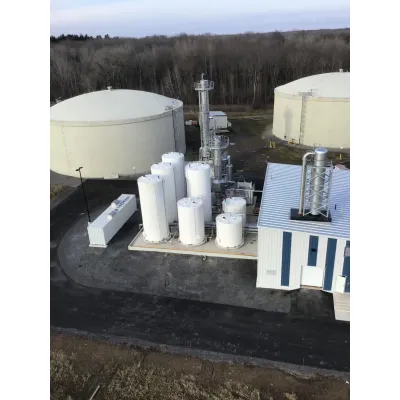

KBK Industries, LLC
- Home
- Companies
- KBK Industries, LLC
- Products
- KBK - Tanks for Biogas and Biomass ...




These include:
Key Options Include:
Biogas and biomass plants are key components in the production of renewable energy. They both utilize organic materials as feedstock but function through different processes. Tanks manufactured by KBK play crucial roles in these processes, serving as reactors, storage, or treatment vessels. Here’s a breakdown of how both types of plants work and the role of tanks in each:
How Biogas Plants Work
Role of KBK Tanks in Biogas Plants
How Biomass Plants Work
Role of KBK Tanks in Biomass Plants
In summary, KBK’s tanks are essential for the operation of biogas and biomass plants, serving a variety of purposes from digestion and storage to treatment. Their design and construction must consider the specific requirements of the materials they hold, such as corrosion resistance, structural integrity under pressure, and, in the case of biogas, gas-tightness.
Biomass plants, which convert organic materials into energy, offer numerous benefits across environmental, economic, and social spectrums. These benefits align with the broader goals of sustainable development and renewable energy adoption. Here’s a detailed look at the advantages of biomass plants: